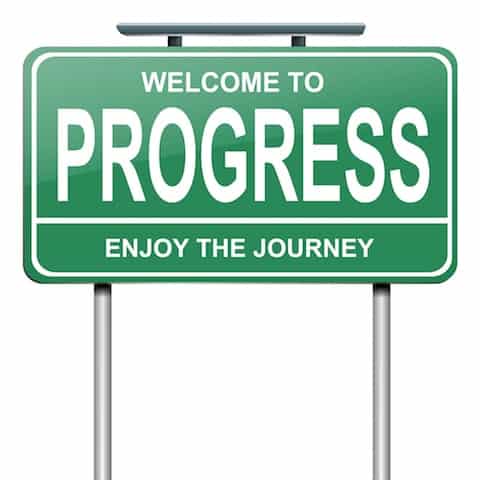Table of Contents
https://vimeo.com/213148398
Superintendent Dr. Robert Pletka discusses personalized learning platforms
By Mind Rocket Media Group
“We want our kids to be agents of change”
Dr. Robert Pletka, Superintendent of Fullerton, CA is looking at unique ways of bringing personalized learning to his district. Pletka believes students should start with a voice that reflects their interests and from there form communities of practice.
Fullerton, CA uses Learning Management Systems (LMS) that incorporate gaming activities. Students go on adventures known as quests that level up and show progress in real-time. Pletka forms focus groups that examine how the kids are responding to the learning environments. Many children are particularly intrigued by the way in which the learning platforms show their immediate progress. Some students also respond to the social context of celebrating their successes with other classmates.
More and more districts are realizing the importance of bringing additional personalized learning activities into classrooms. It takes Superintendents with backgrounds and skills embedded in curriculum and teaching instruction to bring forth change.
It’s nice to see leaders like Dr. Robert Pletka who not only have the professional make-up but have chosen to put their ideas into action.
Interview
Dr. Berger: I’ve been really interested in speaking with superintendents and looking at the changing role of the superintendent and also looking around the passions that superintendents have with their districts and the ways in which they are moving forward initiatives that are very progressive.
We talked about personalized learning, and the minute that that came up, the energy in your voice elevated because of what you’re doing in Fullerton. Can you share the way in which you look at personalized learning?
I’m glad that it’s a term that we’re all looking at and using in education. But, it runs into the danger of being overused by those who aren’t using it correctly. So how are you, in Fullerton, looking at personalized learning? And please share some of the unique ways you’re doing them.
Robert Pletka: We have some versions out there that have parts of it like Khan Academy, SuccessMaker, and TenMarks. While they do allow for personalization in terms of pacing and content, they don’t provide opportunities for voice. For us, a big part of our personalized learning is that kids need to have a voice that potentially impacts the community.
One of our themes with kids is that we want our kids to be agents of change. As agents of change, we have to help kids identify what it is that they’re interested in. What are they passionate about? What is it that they want to go deeper into?

Our version of personalized learning is self-pacing; and as kids demonstrate mastery, they can go deeper or advance to the next level. But it’s also more than that. It’s connecting kids to communities of practice so that they can form their own networks and build their own social and political capital within those networks. Those are a few of the hallmarks of ours.
DB: Speaking of communities of practice, what’s really compelling about the way you look at it is the progressive approach to the ways in which students like to engage with technology and virtualize learning environments, especially with the younger levels.
You told me about “gamified” and the ways in which you look at that. Talk about that and the importance not only in the experience that kids can have but also in the part where the engagement is already embedded in it because you thought ahead of time about the ways in which they would like to learn.
RP: We have a platform that’s open source. It’s available to any school teacher or district that wants to utilize it. We developed units of study. Within our gamified learning management system, kids have opportunities to go on quests, or learning activities.
Some of them are in the community. They can do geocaching with their families and post reviews. And every time they select quests and they have multiple quests they can choose from based on their own interest, they get XP points. And those XP points level up. They have an avatar, and they have a player’s card that shows the badges that they’ve earned. We even have a leaderboard. Some kids want to look at the leaderboards and some don’t.
I do nine or ten focus groups with students each year. I talk to hundreds of kids in this environment. What’s interesting is what they say about the gamified platform. They don’t say that this badge in this system that interests them or excite them. What they say is “You know what? I get a chance to make progress. I get a chance to say I’ve earned a certain amount of XP points today, and that’s greater than it was yesterday.”
As they’re doing something and getting feedback right away, it reinforces that. In addition to what’s happening within the learning platform, we gamify the classrooms. We have what we call in education the progress modeling board, but for the kids we call it the game board.

They have their avatars and as they get XP points, they physically go over to the game board that’s on the wall and they move their avatar up to the next level. When that happens, the teacher will stop for a moment and everybody will clap. Sometimes they have a cheer that. Sometimes they play music. It’s a celebration by the whole class.
And so, the gamified pieces celebrate success both privately in the sense that kids get to reflect on their own progress but also in this big social context. And it’s fun, too.
DB: Formative assessment is at the front mind of leaders in the education space, thinking about the way that we can do it better. You mentioned that the students are a part of that. They’re telling you in focus groups that they can monitor that feedback or they can see the growth, the achievement, and the status of their own experience and participation.
RP: Yes. We took something from the video gaming world called respawn. Your character in most video games doesn’t die. What happens is you try to cross a bridge as an example, and there are fighters on the other side. The fighters shoot you or you get knocked off the bridge. The game is not over. It just respawns your character and your character gets another attempt to go across the bridge.
We’ve incorporated that into our personalized learning so kids can try to learn a concept. They sometimes have a whole-class teaching or it’s a small-class teaching or maybe it’s a video that they see. Then they take a mini-assessment. It’s not an hour assessment, it’s 8 to 10-minutes. Right away they get feedback. And if they don’t pass, we re-spawn them. Their character regenerates giving them other opportunities to learn that concept.
We work with our response-to-intervention teachers to develop intervention lessons that are delivered, but not by some third party. The teacher runs a quick report in the classroom and sees that about ten kids didn’t get this concept. The teacher then has a mini lesson with those kids that has already been developed. Then they get another opportunity to do that quick assessment, and, in 90% of the cases, the kids can move on.

DB: I think what’s interesting in the way that you talk about how the brand of the superintendent has changed, whether intentional or not. This conversation that we’re having today we might not have had ten years ago with regard to your knowledge base and your role, going from city manager to being embedded in understanding curriculum and instruction and the development of teachers.
Is that something you’re aware of consciously, or has that just been an evolution for you both as a professional and the profession as a whole? Have you noticed that?
RP: There is definitely a shift towards instruction and learning. And school districts and school boards are interested in bringing in leaders who can lead that work, especially with No Child Left Behind and in California, we also now have our new dashboard system.
I think boards are really aware of instruction as important to their own credibility in the state and with constituents. That’s driven some change on who they want to bring to this position.
McREL did a study a few years ago on principals that found that when principals lead innovation they found that there were major changes or more minor changes. They said that with minor changes, the most important characteristic that a principal can do is monitoring implementation and the innovation.
But if it’s a major change, the principal really needs to know the innovation that they’re implementing at a very deep level. That had one of the greatest effect sizes on whether a principal could successfully implement a major change initiative or not.
As a superintendent, I think some of the conclusions of that study could be extrapolated to the role of superintendency. If we want to do major instructional, curriculum, and learning changes, I think it’s important that the superintendent is able to understand at a deep level. The superintendent may not execute every level of it, but the superintendent needs to know those elements so they can move the change forward.
DB: Yes, and to do so without fear of failure. I love the idea of the “respawn.” Even a superintendent needs to know that you can respawn in real time and pivot.
RP: We’ve been iterating our version of personalized learning which we call iPersonalize. Every time we do an iteration of the game ─ it’s now our eighth iteration ─ I do focus groups with the kids. And I love kids because they just tell you exactly what they think.

In our first iteration of the game, I did this focus group. I asked a sixth grader, “Does the iPersonalize unit feel like a game?” He looked at me and he said, “My heart hurts that you call this a game.”
So, epic failure on our first version, but we learned from it. As a result,we have made it feel much more like a game and kids now call what we do in iPersonalize a game. Even though it’s disguised learning, it’s standards-based education, they see it as a game.
DB: It’s inspiring. I hope the audience can sense that from your words today. It’s really great what’s going on in Fullerton. The students and the community are lucky to have you.
This article was originally published on The Huffington Post by Dr. Berger
About Dr. Robert Pletka:
Prior to becoming the Superintendent of Fullerton School District in 2012, Dr. Pletka served as Superintendent of El Centro and Associate Superintendent of the Vista Unified School District. Earlier he was Director of Instruction and Technology for the Covina-Valley Unified School District and has taught as an elementary and middle school teacher in the Lake Elsinore Unified School District.
Dr. Pletka has authored two books, Educating the Net Generation: How to engage students in the 21st century and My So-Called Digital Life and has led technology development in all of his assignments.
Dr. Pletka received his doctorate in education degree in the joint program at the University of California, Irvine and California Polytechnic University. His master’s degree in educational technology was earned at National University, while his Bachelor’s degree in communication was earned at California State University, San Bernardino.
Follow Dr. Robert Pletka on Twitter
Author
- eSchool News – The 5 components of a future-proofed technology initiative
- The Progress Index – Preparing students for college and beyond
- The Fullerton Informer – Robert Pletka, Fullerton School District Superintendent puts another 6000 iPads into Fullerton school children’s laps today

